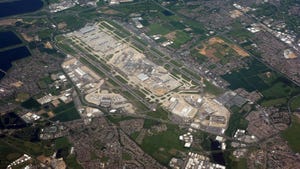A Closer Look at Dell's Cloud DesignA Closer Look at Dell's Cloud Design
Dell Data Center Solutions discusses design approaches using its data center container product, a double-decker unit housing IT equipment in one container and power and cooling infrastructure in another.
August 17, 2009
Dell has been doing some interesting things in its Data Center Solutions Group, but much of its work is focused on custom solutions. Chief among them is Dell's data center container product, a double-decker unit housing IT equipment in one 40-foot shipping container and power and cooling infrastructure in another.
Dell's Jimmy Pike gave a presentation about the Dell container at last week's CloudWorld/Next Generation Data Center Conference in San Francisco. Pike, the director of system architecture at Dell Data Center Solutions, spoke about using containers to build a "cloud optimized" data center.
Pike described a design approach that echoes many ingredients of Microsoft's Generation 4 Modular Data Center design. Executives from Dell have said that Microsoft will use Dell's containers in its new Chicago data center, although Microsoft is also know to have tested containers from other vendors as well.
Here are some of the key features of the "closed-loop" efficiency model applied to entire data centers:
Minimalist Building: Physical structure focused on providing shelter and physical security. That includes no raised floor, with overhead cabling and power.
Cooling: Using outside air (free cooling) whenever possible, along with hot-aisle containment to prevent mixing hot and cold air.
Run Warmer: The input air temperature should be as high as 95 degrees F (35 degrees C), with exhaust air running as high as 120 degrees F in the hot aisle.
Power: Use a Tier 1 or Tier 2 power infrastructure, simplifying to a single path for distribution. Use AC power with voltage "as high as the equipment will allow" and avoid placing alternative power sources in-line through the use of "side-looking" UPS systems.
Equipment: Use servers with high-efficiency power supplies and variable speed fans to take advantage of lower input temperatures.
This results in a "closed loop" system that achieve a Power Usage Effectiveness (PUE) as low as 1.28 in humid climates and 1.11 in arid climates. Pike said this design approach was developed with a scale-out cloud computing data center in mind, and would not be appropriate for many other types of data centers.
"Use of these principles does deviate from what is considered traditional enterprsie norm, but will provide the most cost-effective system attainable," Pike notes in his presentation.
About the Author
You May Also Like







